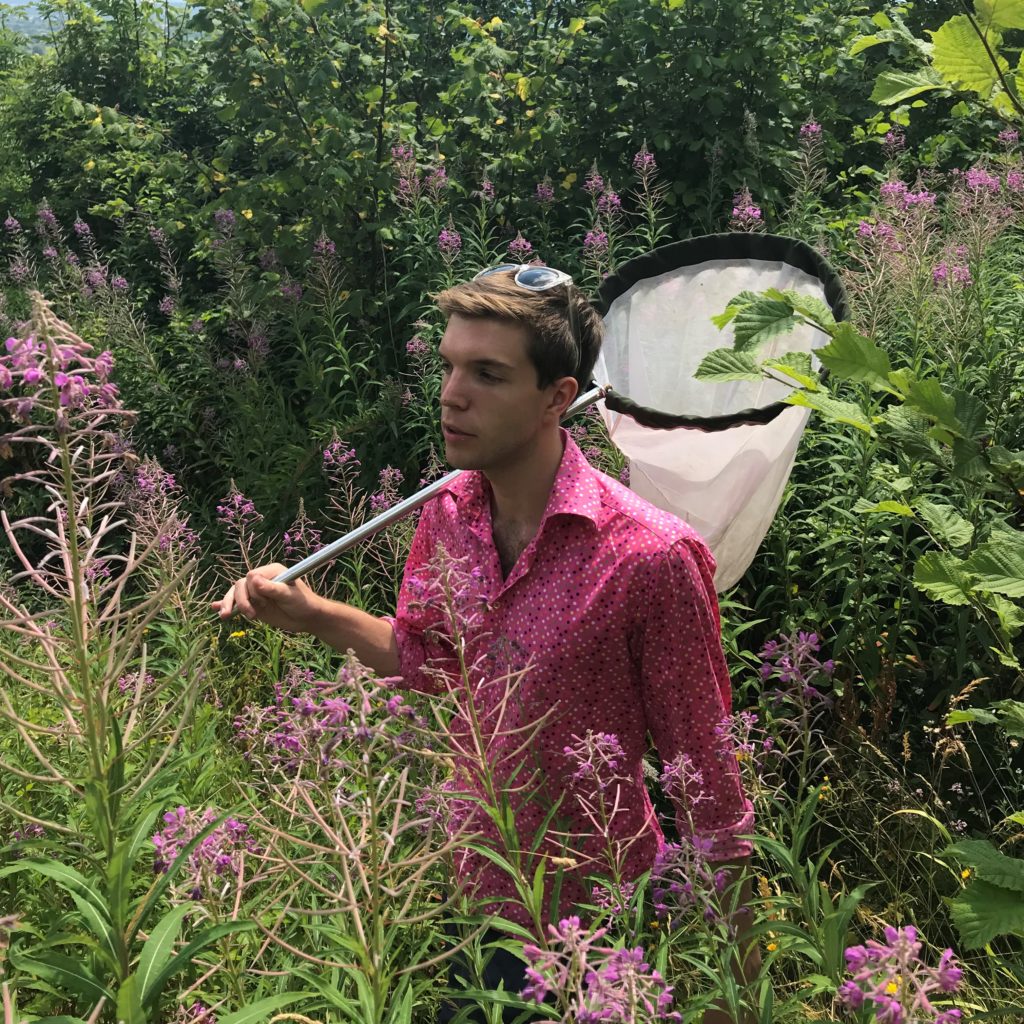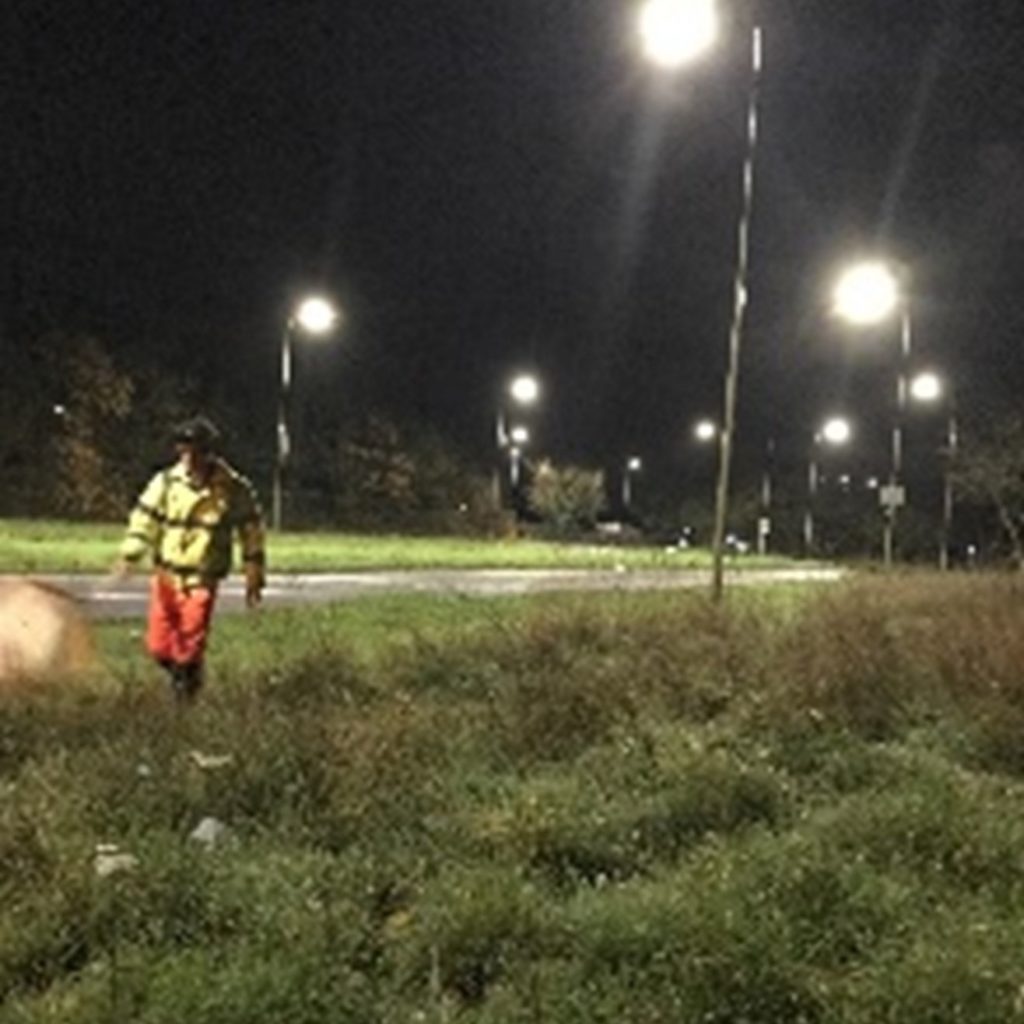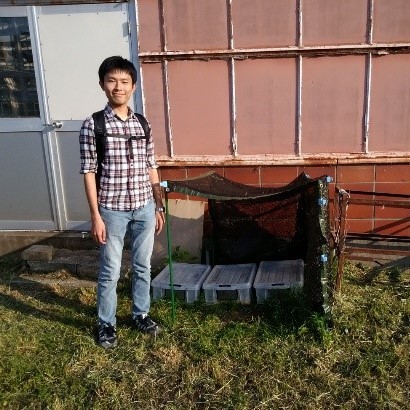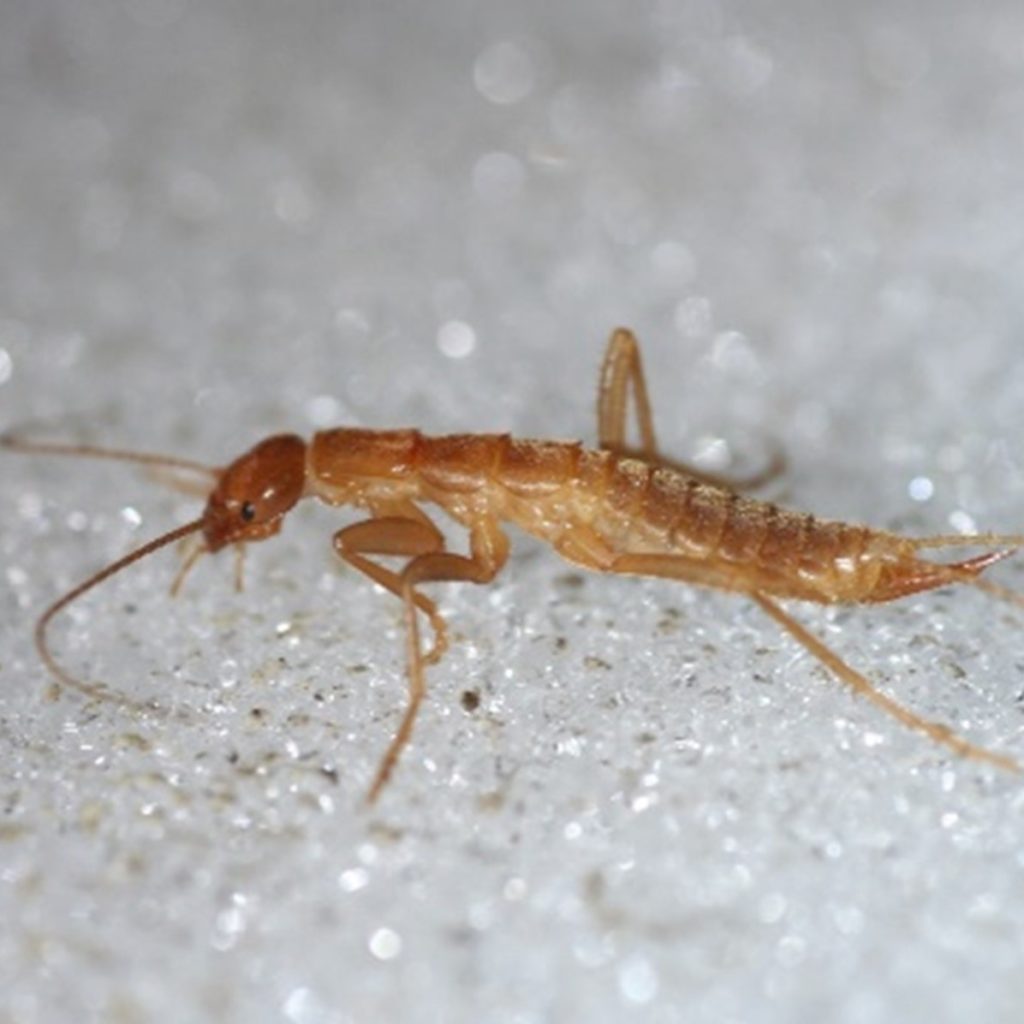Congratulations to the winners of the 2022 Royal Entomological Society Journal Awards. This award is given to the best papers published during 2019-21. Click here to read more about the RES Journal Awards.
Click the journal name below to jump to each journal’s winner and read about the authors of the winning papers.


The Editors of Agricultural and Forest Entomology are pleased to give the above article the award for best paper. Editor-in-Chief, Hefin Jones said “Although we can go back to the classic work of Elton in the late 1950s for the foundations of the ‘biotic resistance hypotheses’, unlike conventional biological control, relatively few studies have considered biotic resistance from resident natural enemies against invasive herbivores.
In this study, Kiran Horrocks and his colleagues explore the native New Zealand ichneumonid fauna in as attempt to determine whether communities can resist species invasions as a result of their native natural enemies. This is really exciting!”
Lead author Kiran Horrocks is currently a PhD student at the Joint Graduate School between the University of Auckland and the New Zealand Institute for Plant and Food Research. His research interests revolve around applied entomology, with a particular interest in novel and sustainable approaches to insect pest management and biosecurity, such as biological control, Sterile Insect Technique (SIT), and preparedness. He has previously researched the potential for biotic resistance amongst existing parasitoid fauna against future pest incursions. Currently, he is investigating the feasibility of a newly conceived eradication approach termed the ‘Kamikaze Wasp Technique’. This aims to provide a pathway for the use of biological control as a component of early-response eradication programmes through the release of sterile parasitoids. These could mitigate the risk of irreversible non-target impacts and potentially alleviate the risk-attentive regulations that limit the release of biological control agents whilst target pest densities remain low.
Kiran summaries the key messages of the paper as follows: As insect pests invade new areas around the globe at an increasing rate, the economic losses that they inflict upon agricultural crops are also escalating. A common, cost-effective, and sustainable method used to control these pests is the importation of natural enemies that occur in the pests’ native range. However, biotic resistance theory posits that pre-existing communities can resist biological invasions due to the presence of natural enemies, and little is known about the extent to which this may occur for insect pests that are yet to arrive. We constructed a dataset containing introduced parasitoid wasps in New Zealand, all insects that they utilise as hosts globally, and the pest status of these hosts. From this, we were able to infer that these resident parasitoids could potentially provide resistance against 442 pest species not yet in New Zealand. This approach could be used to inform responses to pest incursions.

Elia Guariento, Wolfgang Wanek & Konrad Fiedler

The editors of Ecological Entomology felt that the above paper was a deserving winner as it was a very good piece of field biology, combining experimental and observational methods, that attracted a lot of attention in all its various forms.
Lead author Elia Guariento grew up in the border region of South Tyrol, in the centre of the European Alps. He studied biology and ecology at the University of Vienna, where he first began to work with ants.
For his masters thesis he focused on the ant ecology on the elevational tree line in my home region. He continued his studies as a PhD student at the University of Innsbruck and was simultaneously employed at the research institute Eurac Research in Bolzano / Bozen. Here he worked mainly on soil biodiversity and joined the local biodiversity monitoring program as responsible for butterflies. Currently he works as a researcher in ecology with a focus on entomology, community ecology and biodiversity at Eurac Research.
Beside work Elia is a father of two, Mia and Ania, and loves to spend time with them in nature.
Below he summarises the key messages of the paper:
“We investigated the nutritional ecology of ants on five alpine tree line ecotones. By using both experimental baiting and chemical (stable isotopes) methods, the trophic role of these ecologically important insects was assessed. We found that both the ant community as a whole and two of the numerically dominant taxa changed their trophic position over the gradient, taking a higher trophic position above the tree line. We suppose that this shift might rely on the changing availability of trophobiotic partners, which are drastically reduced above the tree line.”

This observation underlines that naturally occurring ant species can adapt their feeding behavior and trophic position in regard to resource availability, evidence that has thus far rarely been recorded for non-invasive ant species.

Douglas H. Boyes, Darren M. Evans, Richard Fox, Mark, S. Parsons & Michael J. O. Pocock

The Editors of Insect Conservation and Diversity are delighted to award this year’s best paper award to the above paper.
Handling Editor Alan Stewart said “The impact of light pollution on natural ecosystems has become a major research growth area in recent years as we start to realise how fast it is spreading and how few areas of the world remain unaffected. It could be one of the more insidious contributors to the widely publicised insect declines.
This paper was the first to review the evidence for possible effects of light pollution across all stages in the life cycle of moths, pointing out that even the day-active caterpillar stage may be impacted indirectly through its food plant or predators, with possible knock-on effects on survival and reproduction.
The paper also made the very important point that, whilst many studies have shown impacts of light pollution at the individual insect level, it is a much harder task to demonstrate how such effects could scale up to measurable impacts on population numbers.
The award of the prize is all the more poignant because, shortly after this paper was published, the principal author Douglas Boyes died suddenly and entomological science lost a very promising young talent.”
Author Darren Evans tells us more about Douglas Boyes, and about this work:
“Douglas was a talented entomologist and PhD student examining the impacts of artificial light at night (ALAN) on moth populations with Dr. Michael Pocock (UKCEH), Dr. Richard Fox (Butterfly Conversation) and Prof. Darren Evans (Newcastle University) and funded by the NERC IAPETUS2 Doctoral Training Programme.”

Prior to this he studied Biological Sciences at Brasenose College, Oxford, graduating with first-class honours in July 2017. His undergraduate research project explored the under-recorded world of micro-moths associated with bird nests. He continued to study at Oxford, earning an MSc in Biodiversity, Conservation and Management with distinction and again conducting a research project focussed on moths. Douglas sadly died during his studies and a tribute can be found here: Tribute to Douglas Boyes | Butterfly Conservation (butterfly-conservation.org)
There is a burgeoning number of studies showing that ALAN has consequences for ecosystems, with growing evidence that it is potentially contributing to declines in insect populations. Recent studies have shown how street lights disrupt adult moth behaviour and the pollination services they provide, but it is still unclear whether light pollution directly impacts moth populations.
In this paper, Douglas and colleagues reviewed the literature to assess the effects of ALAN across moth life cycles and found evidence of diverse impacts across most life stages and key behaviours. They found strong evidence for effects of ALAN (including varying effects of lamp technology) on moth behaviour and physiology, but little rigorous, direct evidence that this scales up to impacts on populations, arguing that more research was necessary in this important area. The review set the foundations for a programme of work in entomology and is already impacting policy and management.

Chaverra-Rodriguez, D., Dalla Benetta, E., Heu, C.C., Rasgon, J.L., Ferree, P.M. and Akbari, O.S.

The editors of Insect Molecular Biology are pleased to give the above article the award for best paper. They feel that it is an important paper that will help to broaden the use of new gene manipulation techniques in wasps and other hymenoptera
Lead author Omar Akbari is a Professor in the School of Biological Sciences, Department of Cell and Developmental Biology at University of California, San Diego.
His lab research focuses on studying the basic genetics and physiology of mosquitoes with the overarching goal of developing innovative, novel, creative, synthetic biology inspired genetic control technologies for reducing the burden of mosquito-borne diseases on humans.
He summarises the key messages of the paper as follows: CRISPR/Cas9 gene editing is a powerful technology to study the genetics of rising model organisms, such as the jewel wasp Nasonia vitripennis. However, current methods involving embryonic microinjection of CRISPR reagents are challenging. Delivery of Cas9 ribonucleoprotein into female ovaries is an alternative that has only been explored in a small handful of insects, such as mosquitoes and whiteflies. Here, we developed a simple protocol for germline gene editing by injecting Cas9 ribonucleoprotein in adult N. vitripennis females using either ReMOT control (Receptor-Mediated Ovary Transduction of Cargo) or BAPC (Branched Amphiphilic Peptide Capsules) as ovary delivery methods. We demonstrate efficient delivery of protein cargo such as EGFP and Cas9 into developing oocytes via P2C peptide and BAPC. Additionally, somatic and germline gene editing have been demonstrated. This approach will greatly facilitate CRISPR-applied genetic manipulation in this and other rising model organisms.

Ronai, I., Tufts, D.M. and Diuk-Wasser, M.A.
Editors-in-Chief Lisa Reimer and Emma Weeks are pleased to give the best paper award to the above paper, they felt that this was an outstanding contribution because of the clear research questions and elegant study design which included innovative assays to understand the behaviour of an invasive tick species.
The paper has joint first authors, Isobel Ronai and Danielle Tufts. Dr. Ronai is a Postdoctoral Fellow in the Department of Organismic and Evolutionary Biology at Harvard University. Her research interests are in ticks and tick-borne diseases of medical and veterinary importance. Dr. Tufts is an assistant professor in the Infectious Diseases and Microbiology department at the University of Pittsburgh, Pennsylvania. Her current interests include vector-borne diseases, pathogen transmission pathways, ecological drivers of pathogen emergence, host-vector-parasite interactions, invasive species introductions, and coinfection dynamics.
The Asian longhorned tick (ALT) was recently discovered in the USA and has rapidly spread across 17 states. This invasive species is a vector for several zoonotic pathogens in its native range; however, its ability to acquire and transmit USA endemic pathogens depends on its association with reservoir host species, particularly the white-footed mouse, a primary reservoir for various pathogens. The authors designed a behavioural assay to investigate the interactions of larval ALT and potential mammalian hosts, including humans, using hair samples. We discovered that ALTs actively avoided mouse and human hair significantly more often compared to other mammalian hosts (dog, cat, white-tailed deer). This study identified a unique tick-host interaction behaviour, suggesting that some ticks utilize a species-specific property in animal hair for host selection. The aversion of ALT to the white-footed mouse and humans reduces the likelihood of this tick becoming an important vector for USA endemic zoonotic pathogens.

Naoki Matsuda Takashi Kanbe Jun Endo Shin-Ichi Akimoto & Hideharu Numata

The Physiological Entomology editors are pleased to award the above article this year’s best paper award.
Lead author Naoki Matsuda received his Ph.D. in 2020 from Kyoto University, Japan, under the supervision of Prof. Hideharu Numata. He is currently working as a research fellow at National Institute for Basic Biology, Japan, where he studies an interaction between the aphid and its obligate symbiotic bacterium from the perspective of the seasonal life cycle of the host aphid.
Here he gives us the key messages for this article. Aphids are known to have a “seasonal timer”, which suppress responsiveness to short photoperiods as an autumnal cue during a few months over generations from an overwintered generation. However, an adaptive significance of the seasonal timer had been unknown. Matsuda et al. (2020) experimentally showed that the seasonal timer is adaptive for avoiding untimely autumnal response in spring: Aphids in which the seasonal timer had expired responded to spring short days, while aphids in which the seasonal timer was operating did not. This study showed, for the first time, that a photorefractory period lasting over generations is a trait of ecological importance.

Sean D. Schoville, Tierney C. Bougie, Roman Y. Dudko, Matthew J. Medeiros

The editors are pleased to award above article this year’s best paper award. Lead author Sean Schoville is an Associate Professor in the Department of Entomology at the University of Wisconsin-Madison whose research focuses on how organisms evolve in response to environmental change.
Dr. Schoville approaches these problems using population genomics and functional genomics methods, while integrating ecological and physiological data.
His research addresses fundamental and applied research questions in the fields of evolution, ecology, conservation, and agriculture.
Ice crawlers forage nocturnally at freezing conditions, typically on snow, and are highly distinctive . Much remains to be learned about their basic biology, and specimens remain exceedingly rare in entomological collections. The goal of this paper was to improve our understanding of their biodiversity and evolutionary relationships in North America, and how that was shaped by past climate variation.

By developing a large genetic dataset for a set of ice crawler samples spanning their known geographical range, we show that there is substantial undescribed, cryptic species diversity and very high endemism at local geographical scales. Using spatial reconstructions of ancestral ranges based on the geographic and genetic data, we estimate that species retreated to nearby, highly localized refugia at the edge of ice sheets during glacial episodes. Finally, using a modelling approach to assess when ice crawler species were formed through time, we show that, surprisingly, dry climatic periods during the Miocene (rather than cold, glacial conditions in the Pleistocene) caused ice crawlers to diversify. This suggests that for cold-specialized insects such as ice crawlers, unfavourable dry conditions may have led to long periods of isolation and allowed for evolutionary lineages to proliferate.

Read all the 2021 winning articles in this Virtual Issue.
Click here to read more about the RES Journal Awards.